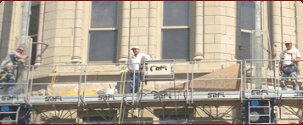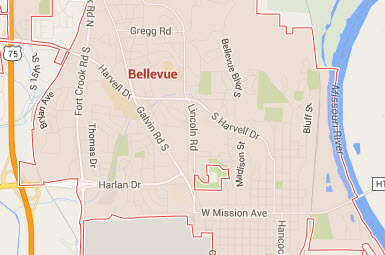Masonry Water Repellent
Masonry water-repellents are often incorrectly referred to as sealants or waterproof coatings. Water-repellents are clear transparent coatings that are intended to keep water from penetrating the masonry. A good water-repellent is breathable and will allow the moisture to escape.
Waterproof coatings seal the surface from water penetrating but usually doesn’t allow water to escape. These coatings will include elastomeric paints, bituminous coatings, etc.
MCI’s choice for protective treatments for masonry and concrete are Prosoco Products. They are the industry leader for siloxane and silane water-repellents. These treatments are VOC compliant. A list of some of our widely used treatments include:
Siloxane PD - great water-repellent for most masonry, stucco surfaces, and architectural concrete. This is a deep penetrating water-repellent that locks out water which will help reduce spalling, cracking, staining, mold and mildew. Service life. - (10 + years).
Natural Stone Treatment - A siloxane protection for most limestone, marble, and clay brick. It reduces mold, mildew, atmospheric staining and protects mortar joints. This water-repellent will not alter the appearance of the stone. Service life - (10+ years.)
Blok - Guard and Graffiti Control - This water-repellent is for exterior block and other porous masonry. This treatment will help block graffiti and make it easier to remove. Service life.- (5-7 years)
Paver Kare - Concrete Pavers / Brick Pavers / Stone Pavers - To date literally millions of pavers have been installed throughout the U.S. which includes malls, public squares, parking lots, patios and driveways. Stains, soiling water penetration and salts can be harmful to your pavers. MCI can power-wash your pavers and apply a paver enhancer or a glossy deep sheen water-repellent. All of these paver products are breathable and slip resistant.
Penetrating water-repellents can keep your pavers looking great and can add years of service life to your pavers. Protect your pavers from food, drink, mildew, salt and water penetration. We also install a sand joint material that will keep the sand in the joints, prevent weeds from growing, and when water is applied to the installed sand it sets up and acts like a mortar joint.
Water-repellent on historical buildings? Many historical buildings have survived decades without water-repellents. The most likely cause of masonry damage is water penetration from lack of maintenance. This includes missing or open mortar joints, cracked mortar joints, caulk joints around door and window openings and leaking roofs or gutters. If a historical building is kept watertight then water-repellents should not be necessary. An exception could be made with historical buildings built in the early 18th & 19th Century. Most of the brick in this era were very soft and porous. After these bricks have been made water tight thru repointing and masonry repairs and has had the time to dry out one could then evaluate the masonry. If it appears that water is still entering the masonry then a water-repellent may be considered. With that said any water-repellent that is applied should be to selected areas only and not the entire building.




